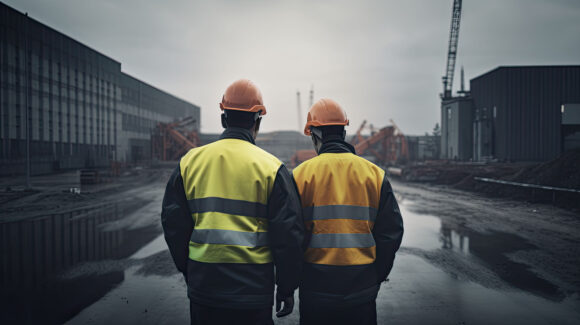This post is part of a series sponsored by IAT Insurance Group.
Water damage poses an ongoing threat to buildings under construction and is one of the leading causes of property damage worldwide.
In the United States alone, annual losses attributable to weather-related and non-weather-related water damage amount to $500 million[1]and highlights the significant financial burden this damage can place on construction projects.
As buildings take shape, water can enter through various access points and exploit vulnerabilities from surface water flooding, uncovered or temporary roofing systems, wind-driven rainfall, water supply lines, and water drainage lines. Understanding the ubiquitous nature of water and its ability to infiltrate any available opening highlights the need for robust risk management strategies.
How to create a construction site-specific plan
The first and most important step in preventing water damage during construction is to create a site-specific plan. Each project will have its own challenges depending on location, topographical construction and intended occupancy. General contractors or construction managers should appoint a competent person to oversee and manage the site-specific plan and ensure that sufficient staff and appropriate materials are available to minimize potential losses. The following five steps will help you create a plan.
- Establish site classification and groundwater controls from day one. Have engineered rainwater drainage systems installed as early as possible. The zoning of the site meant that the water should be diverted away from the building. Keep drains clear throughout the construction process by using silt fences and/or hay bales to prevent foreign objects from entering. Ensure availability of working pumps to remove water from pits, excavations and other low-lying areas where water is not desired.
- Protect materials, supplies and building systems. Supplies and materials that are highly susceptible to water damage, such as drywall, ceiling tiles, and electrical components, should wait to be delivered until the building is waterproofed. If early delivery is required, protect your items stored on site by covering the items with tarps and using pallets to keep the items off the ground.
- Monitor the weather and plan for upcoming storms. If possible, do not begin interior work such as drywalling, painting, and trim work on floors where walls, window openings, and roofs have not yet been completed. If work must continue, take every precaution to protect these areas with strong wind-resistant plastic tarps and other water-repellent methods such as temporary roofing systems.
Pay particular attention to floor openings such as electrical ducts or elevator shafts, where water can damage equipment and plumbing on multiple floors. If possible, seal openings or install temporary dikes to prevent surface water infiltration. During rainfall events, prepare personnel and supplies to respond to water-related emergencies and minimize damage.
- Limit active water sources within the building during construction. It is best to limit the water required for construction to the ground floor during construction. This minimizes damage if a leak occurs or someone forgets to turn off the faucet completely. Fill water and drain pipes within the building should be pressure tested and fully inspected before commissioning. If necessary, protect pipes from sub-zero temperatures with permanent building heating.
Consider installing water detection or flow alarms in areas that could be particularly vulnerable to damage. This is also important for stressed systems where normal water flow should not occur, such as automatic sprinkler systems. Water detection systems can detect water at ground level and send a notification of the presence of water.
- Conduct building inspections. Whether or not bad weather is forecast, it is important to protect yourself from potential water damage. At the end of each workday, ensure that windows and doors are closed and any temporary tarps or roofs are properly secured. Check plumbing for visible leaks and ensure all faucets are completely closed. It is also recommended that you carry out a full inspection of your construction site on a regular basis.
Best exercise: Shut off the water supply to the main service valves before leaving the project for an extended period of time. Consider doing this before a weekend or holiday to provide peace of mind for those involved in the project.
ASK A LOSS CONTROL PERSON
Do you have a question about risk mitigation? Email losscontroldirect@iatinsurance.com to receive an answer to your question in a future blog.
By John Holpuch
[1] Risk and Insurance “Water damage is a leading cause of commercial property damage. How sensor technologies help mitigate these demands,” July 26, 2023.
subjects
construction
Interested in construction?
Receive automatic notifications for this topic.
Source link
2024-05-01 04:04:06
www.insurancejournal.com













